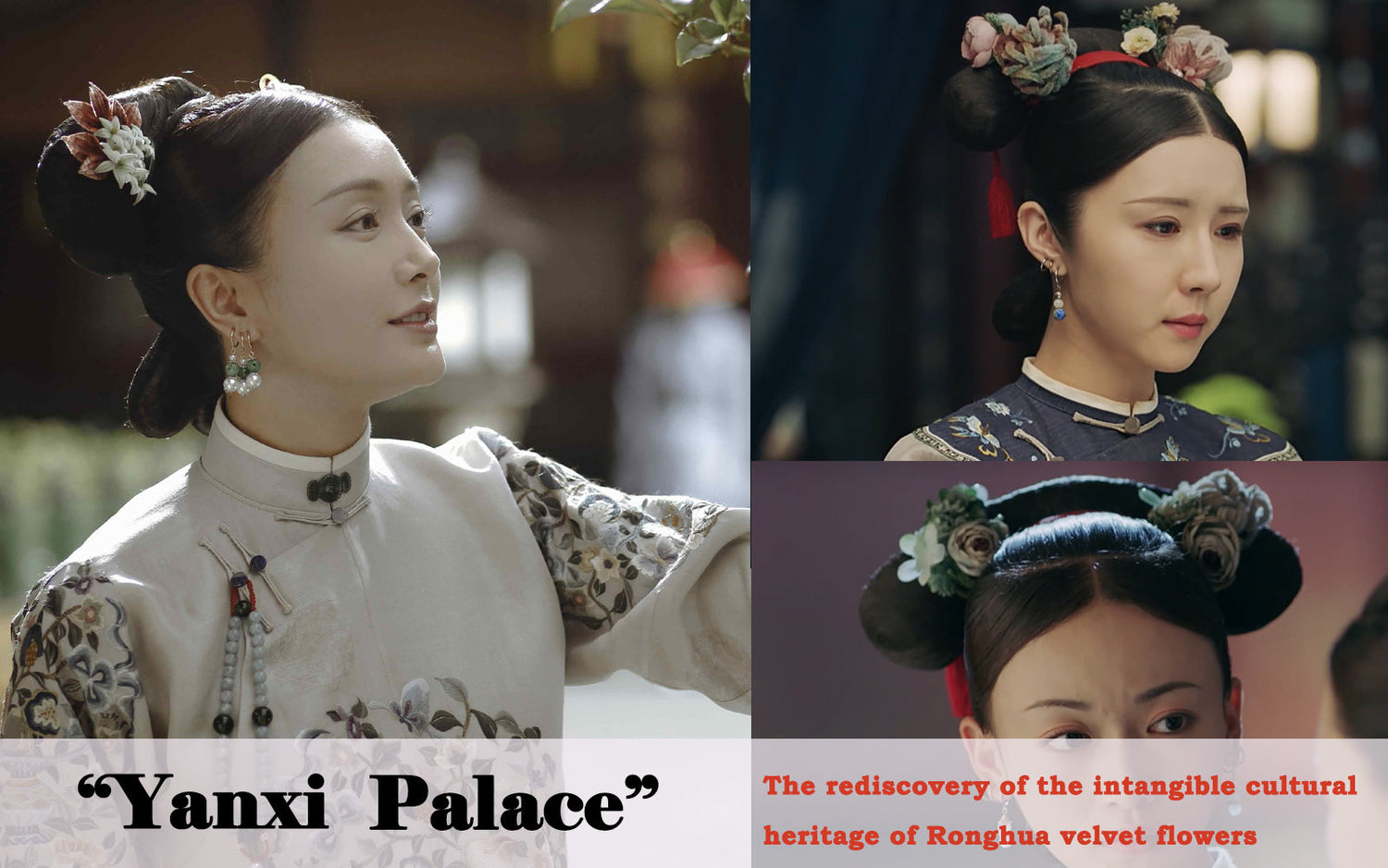
The rebirth of intangible cultural heritage Ronghua velvet flowers
The resurrection of the thousand-year-old velvet flower marks the rebirth of an intangible cultural heritage craft.
When Wei Yingluo pinned a crimson (Ronghua) velvet flower to her temple in "Story of Yanxi Palace," sparking awe at traditional headwear both on and off screen, this century-old Tang Dynasty court craft is experiencing a remarkable resurgence. Velvet flowers, once the preserve of the royal family, are now emerging from the folds of history to the forefront of fashion, carrying the warmth of a thousand years of memory.
Remnants of the Flourishing Tang Dynasty: A Thousand Years of Elegance Beneath the Palace Eaves

The story of Ronghua velvet flowers begins beneath the eaves of Tang Dynasty Chang'an. As exclusive accessories for the royal family, velvet flowers are crafted from silk and copper wire. Through over a dozen handcrafted processes, including splitting the velvet, beading the tips, and crocheting the petals, ordinary silk threads are transformed into "head ornaments" as soft as clouds. Historical records show that Yang Guifei wore a peony velvet flower while visiting Qujiang, the petals cascading like vibrant, vibrant blossoms. The "Taiping Guangji" even records emperors rewarding meritorious officials with velvet flowers, a testament to their royal nobility. However, with the passing of dynasties, the art of velvet flower gradually faded into obscurity, a legacy reminiscent of the imperial court, surviving only in a few areas like Nanjing and Yangzhou as a form of "intangible cultural heritage."
The Rebirth of Intangible Cultural Heritage: When Nanjing and Yangzhou Ronghua Velvet Flowers Meet Modern Design
In Nanjing, Master Zhao Shuxian, known as the "Inheritor of the Intangible Cultural Heritage of Velvet Flower," and Ms. Liu Mei, the inheritor of the Yangzhou Intangible Cultural Heritage, continue to safeguard this art form with half a century of skill. At their workbenches, mulberry silk is split to a fineness of 0.1 mm in a precise humidity, while copper wire is forged to a hair-like fineness. But the future of intangible cultural heritage lies beyond mere preservation. A new generation of designers is infusing traditional techniques with modern aesthetics: the intricate peonies of the Tang Dynasty court are transformed into clean, contemporary totems; the gold foil embellishments used by Ming Dynasty emperors are transformed into ethereal pearl pendants. True to our brand philosophy—"Bringing Eastern Aesthetics into Everyday Life"—intangible cultural heritage should not be museum exhibits, but living art that breathes the modern air.

When traditional patterns reawaken in the hair
Gaze upon this [product name, such as: Jinghong·Red and Blue Overlapping Hairpin], where the graceful red and blue color scheme of the Tang Dynasty meets the minimalist aesthetic of the Song Dynasty. The central flower, crafted from crimson silk, recreates the allure of the peony from "Ladies with Flowers in Their Hairpins," complemented by azure leaves reminiscent of Song Dynasty porcelain glaze. The gilded copper stamens conceal the auspicious motif of "Tang Grass Pattern." Another [product name, such as: Qingping·Tassel Hairpin] simplifies the tassels of the Ming Dynasty court into dangling pearl pendants, fluttering like butterfly wings as you walk. These designs aim to revitalize intangible cultural heritage crafts through everyday wear—when velvet flowers move from television dramas to everyday life, traditional culture truly achieves a new lease of life.
The revival of velvet flowers is a dialogue spanning millennia. From the Tang Dynasty court to contemporary hairpins, from intangible cultural heritage preservation to everyday aesthetics, this craft is weaving a bridge between tradition and modernity with its flexible silk threads. The next time you pin a velvet flower to your hair, you're wearing more than just a piece of jewelry; you're wearing a flowing, millennium-old memory, a gentle force that keeps intangible cultural heritage alive in the present.
A shining pearl of traditional Chinese craftsmanship, velvet flowers have evolved over millennia, constantly integrating contemporary aesthetics and technological innovations with the passing of dynasties, displaying distinct, periodic characteristics.
